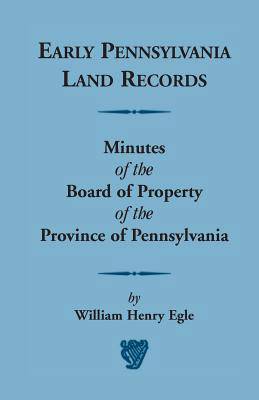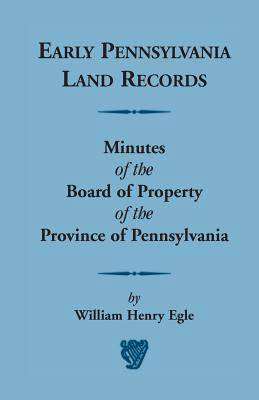
Je cadeautjes zeker op tijd in huis hebben voor de feestdagen? Kom langs in onze winkels en vind het perfecte geschenk!
- Afhalen na 1 uur in een winkel met voorraad
- Gratis thuislevering in België vanaf € 30
- Ruim aanbod met 7 miljoen producten
Je cadeautjes zeker op tijd in huis hebben voor de feestdagen? Kom langs in onze winkels en vind het perfecte geschenk!
- Afhalen na 1 uur in een winkel met voorraad
- Gratis thuislevering in België vanaf € 30
- Ruim aanbod met 7 miljoen producten
Zoeken
Early Pennsylvania Land Records Minutes of the Board of Property of the Province of Pennsylvania
William Henry Egle
Paperback | Engels
€ 51,95
+ 103 punten
Omschrijving
Shortly after William Penn was granted the tract of land known as Pennsylvania by King Charles II in 1680, he began offering 'rights' to a set number of acres for investors. These 'rights' were generally offered in lots of 5,000 acres, but 'rights' for smaller tracts were allowed, the minimum purchase size being 250 acres. The purchaser would receive a warrant in exchange for his money. This warrant provided proof of his right to select a tract of land of specific size, not already claimed, once he arrived in America. Once suitable land was located, the purchaser then applied to the Surveyor General for a survey, which once completed enabled the purchaser to apply for a patent, when he could afford the fee. Originally published as Volume XIX of the Second Series of the Pennsylvania Archives in 1893, this work contains the Minutes of the Board of Property beginning with Book C, which is believed to be the earliest legible collection of property records, and continuing on through Book I. Covering the time frame from March 13, 1687 through March 30, 1732, this 2 volume set is essential for anyone wishing to research early Pennsylvania genealogy. For each property the board assesses in these records, a history of the tract is given, providing a considerable amount of genealogical information about the family who owned the land. The original surname index has been included.
Specificaties
Betrokkenen
- Auteur(s):
- Uitgeverij:
Inhoud
- Aantal bladzijden:
- 790
- Taal:
- Engels
Eigenschappen
- Productcode (EAN):
- 9780788422799
- Verschijningsdatum:
- 1/03/2013
- Uitvoering:
- Paperback
- Formaat:
- Trade paperback (VS)
- Afmetingen:
- 140 mm x 216 mm
- Gewicht:
- 898 g

Alleen bij Standaard Boekhandel
+ 103 punten op je klantenkaart van Standaard Boekhandel
Beoordelingen
We publiceren alleen reviews die voldoen aan de voorwaarden voor reviews. Bekijk onze voorwaarden voor reviews.









